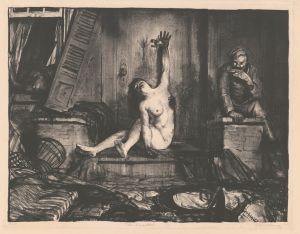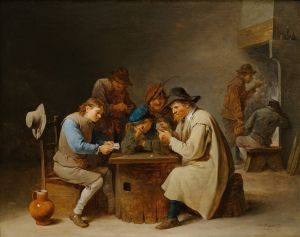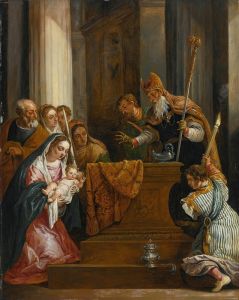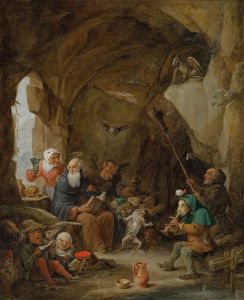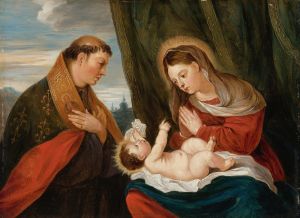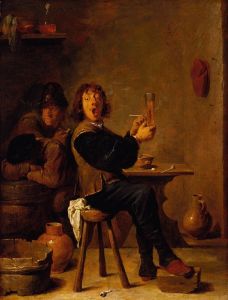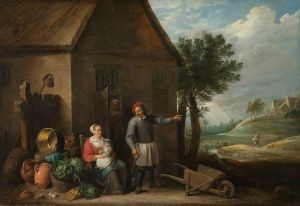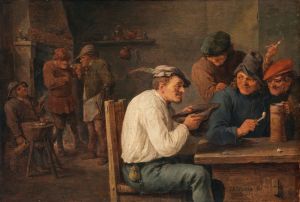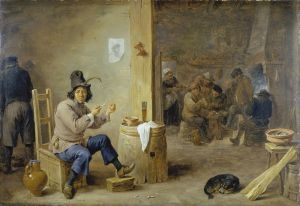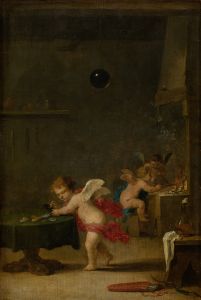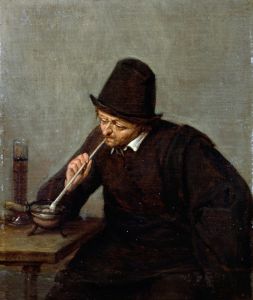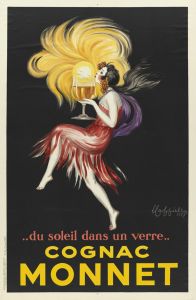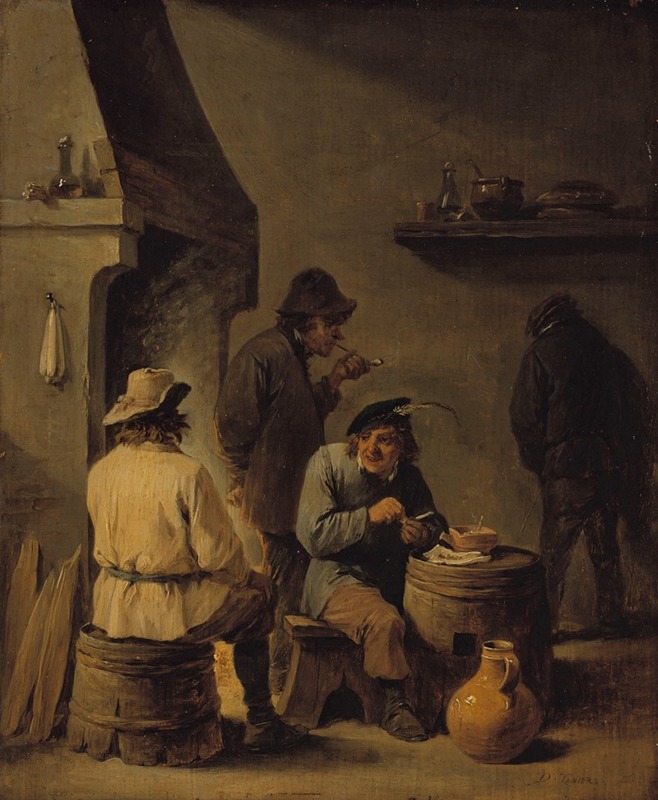
La tabagie
A hand-painted replica of David Teniers The Younger’s masterpiece La tabagie, meticulously crafted by professional artists to capture the true essence of the original. Each piece is created with museum-quality canvas and rare mineral pigments, carefully painted by experienced artists with delicate brushstrokes and rich, layered colors to perfectly recreate the texture of the original artwork. Unlike machine-printed reproductions, this hand-painted version brings the painting to life, infused with the artist’s emotions and skill in every stroke. Whether for personal collection or home decoration, it instantly elevates the artistic atmosphere of any space.
David Teniers the Younger was a prominent Flemish artist known for his genre scenes, landscapes, and depictions of peasant life. Born in Antwerp in 1610, Teniers was part of a family of painters, with his father, David Teniers the Elder, also being a notable artist. Teniers the Younger became a master in the Antwerp Guild of Saint Luke in 1632 and went on to have a successful career, eventually becoming the court painter for Archduke Leopold Wilhelm of Austria.
One of Teniers' notable works is "La Tabagie," a painting that exemplifies his skill in capturing everyday life with a sense of realism and attention to detail. The term "tabagie" refers to a smoking room or a place where people gather to smoke and socialize, which was a common theme in 17th-century Flemish and Dutch art. These scenes often depicted groups of men engaged in leisurely activities, such as smoking pipes, drinking, and playing cards, reflecting the social customs and leisurely pursuits of the time.
"La Tabagie" is characteristic of Teniers' genre paintings, which often feature rustic interiors and lively gatherings. His works are known for their vibrant colors, intricate details, and the ability to convey the textures and materials of the objects depicted. Teniers had a keen eye for the subtleties of light and shadow, which he used to create depth and atmosphere in his paintings.
In "La Tabagie," Teniers captures a moment of conviviality and relaxation. The composition typically includes a group of men, possibly peasants or townsfolk, gathered around a table. They are engaged in conversation, smoking pipes, and enjoying each other's company. The setting is usually a dimly lit interior, with light filtering in through a window or door, casting soft shadows and highlighting the figures and objects in the room.
Teniers' ability to depict human expressions and interactions adds a layer of narrative to his paintings. The figures in "La Tabagie" are often portrayed with animated gestures and expressions, suggesting a lively exchange or a humorous anecdote being shared among friends. This attention to human interaction and the portrayal of everyday life is a hallmark of Teniers' work and contributes to the enduring appeal of his genre scenes.
Throughout his career, Teniers produced numerous paintings with similar themes, and his works were highly sought after by collectors and patrons. His influence extended beyond his lifetime, as his paintings continued to be appreciated for their charm and insight into 17th-century Flemish culture.
"La Tabagie" is a testament to David Teniers the Younger's mastery of genre painting and his ability to capture the essence of social gatherings in his art. His works remain an important part of the study of Flemish Baroque painting and provide valuable insights into the social and cultural life of the period.





